From shaving to sugaring to weaving to donning ornate heirloom headpieces, our hair grooming choices — from our heads to our nooks and crannies — convey volumes about us. Just one peep, or a closer look, at someone can tell you their affiliation with or rebellion against their culture, as well as their personal flair. With haircare historically being gendered, with masculine and feminine grooming expectations, and hair beauty norms changing over time, it can be tough to keep track of what to slick back and what to spike. But the good news is that the world is rife with inspiration. Here is a look at grooming habits and haircare traditions from around the world, as well as the history and cultural significance behind them.
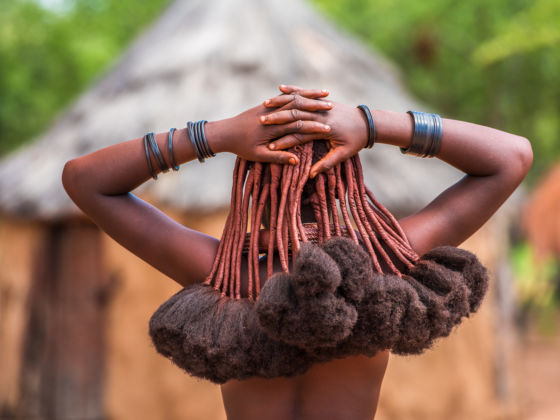
9 Haircare Traditions From Around the World and the Histories Behind Them
1. Hair coloring is as old as human civilization.

Photo: Jose Manuel Revuelta Luna/Shutterstock
Humans have colored all their hair — not just atop our heads — since time immemorial. Back in the day, people used naturally occurring plants like henna and turmeric, and even insects like cochineal’s carmine red, to tint their locks. Celtic people used lime to whiten their already blonde hair, creating an almost ethereal effect. Blonde was in style for the ancient Greeks, too, but Romans saw it as a sign of prostitution.
During the 1600s in Europe, lead, sulfur, and quicklime made quick work of dyeing hair. (Often the recipients died of poisoning as a result.) And for as long as they can remember, the ladies of the Himba tribe of northern Namibia have tinted their hair and skin a gorgeous reddish using otizje, a paste made of ochre minerals and fat blends. Commercially available bright, natural, grey, and pastel hair dyes have gone in and out of style throughout the decades around the world. Dyeing non-head hair, too, periodically comes back into style throughout the decades. Miley Cyrus might have been the first to publicly dye her armpit hair blue, and nude model Skella Borealis has had her pubic hair pretty much every hue in the visible spectrum.
2. Long hair and spirituality

Photo: Dmitry Kalinovsky/Shutterstock
A number of cultures around the world never cut their hair for sacred reasons. These include certain indigenous North American groups, some of whom believe that to cut one’s hair is to cut off the flow of thought or connection to a higher power. Among other native North Americans, long hair is a symbol of resistance. The Amish believe that the Bible prohibits men and women from shaving in order to differentiate them from their secular neighbors. Devout Sikhs have a similar tenant: Neither men nor women are to cut their hair, and women aren’t to shave or even trim their brows. The practice is called Kesh. It’s one of their five Kakaars, visible symbols of the religion. Another Kakaar is the comb they use twice daily to groom their hair, the Kanga. To keep their hair out of the way, they tie it in a simple Joora knot.
3. Sporting dreadlocks
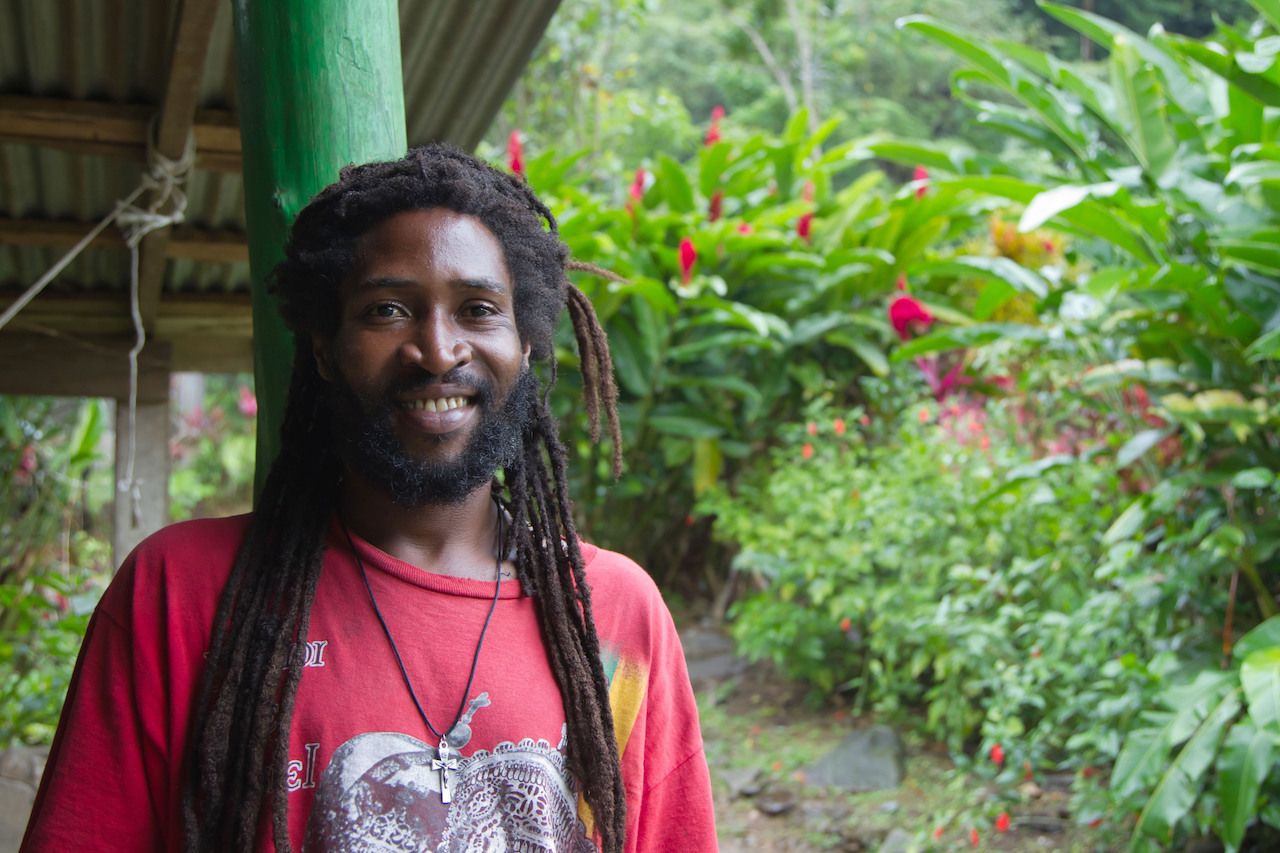
Photo: Jeanette Dietl/Shutterstock
Dreaded hair is one way that many Rastas recognizably separate themselves from non-Rastas, or “baldheads.” Keeping their bodies natural is part of the Rastafarian belief system, and dreads are what often happens to hair that’s freed from artificial processes. According to the Rastafarian interpretation of the Bible, dreadlocks also symbolically connect them to the strength of Samson, whose hair was the source of his power.
The style has an even deeper history, going back as far as the Minoans of Crete, 3,600 years ago. Some mummified Egyptians had dreadlocks, as did Aztec warriors. Yet it is controversial today: Many people with dreads are stereotyped as unkempt, and there have even been court cases about whether people have the freedom to wear their hair this way. In fact, US federal courts have upheld workplaces’ legal right to not hire people with dreadlocks, saying hairstyles are not an intrinsic aspect of being black. Certain places, like New York and California, are finally making moves to eradicate these racial biases, banning workplaces from discriminating against natural hairstyles, including dreads.
4. Head shaving is a grooming habit found worldwide.
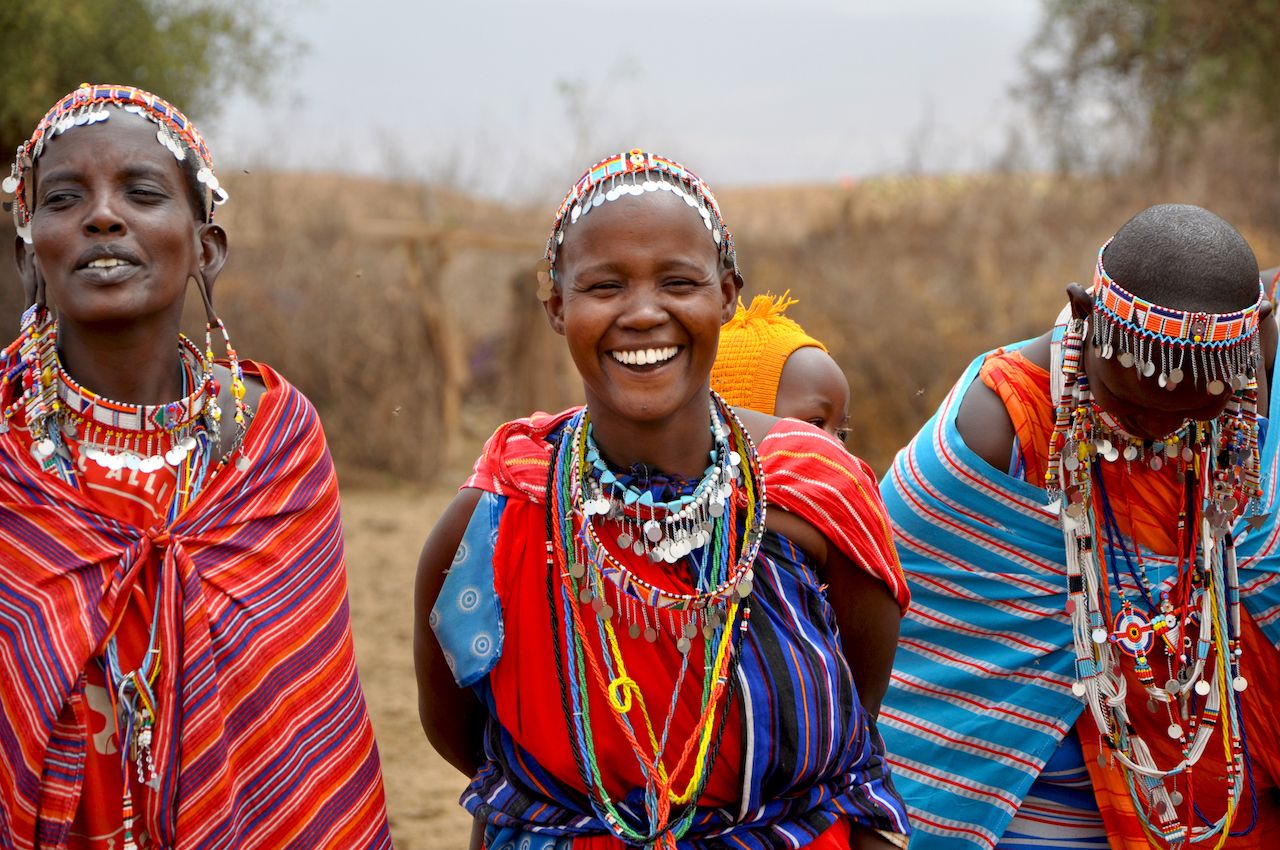
Photo: Piu_Piu/Shutterstock
Sometimes head shaving is due to perceptions of beauty, other times purification, and sometimes for anonymity rituals. The Masaai women of Tanzania and Kenya shave their head hair and adorn themselves with jewelry instead. Their female beauty standards involve the sleekness of the head. Hindu male and female children go through a head-shaving ritual called chudakarana for purification, and adults sacrifice hair at temples in exchange for blessings. In fact, many monks of various religions shave their heads. Korean Buddhist monks and nuns shave their heads every 15 days. In another purification rite, among the Hasidic Jewish Satmar sect, married women shave their heads prior to their monthly ritual bath. It’s a worldwide, time-honored tradition for male military recruits to get their heads shaved; it’s likely to teach newbies to be egoless, anonymous, and obedient.
5. Total body hair removal

Photo: Vladyslav Lehir/Shutterstock
Starting in the sixth century BCE, about 8,000 years ago, upper-class Egyptians of both sexes used razor-sharpened seashells and stones to remove all their hair except their eyebrows. Records show that some wealthier folks did this every other day as part of a purification ritual. Unkempt beards in particular were a sign of the lowest of the lower classes. Royalty went to barbers who used jewel-encrusted razors. Then they started using beeswax for one of the earliest known waxing methods, devising a simple form of sugaring to remove hair at the root.
Now also known as epilation, this early sugaring involved applying a paste made of available materials, including water, lemon juice, and something sticky, and ripping it off. In the 1980s, Israel developed the Epilady, a handheld buzzing device that used rotating coils to rip the hair out at the root. The tradition of the Brazilian wax was actually created by Brazilian immigrants in New York City, and it was popularized by Sex and the City in the 1990s. Today, long-lasting laser hair removal is alluring to those want to zap all the unwanted tendrils.
6. Braids are much more than a pretty hairstyle.
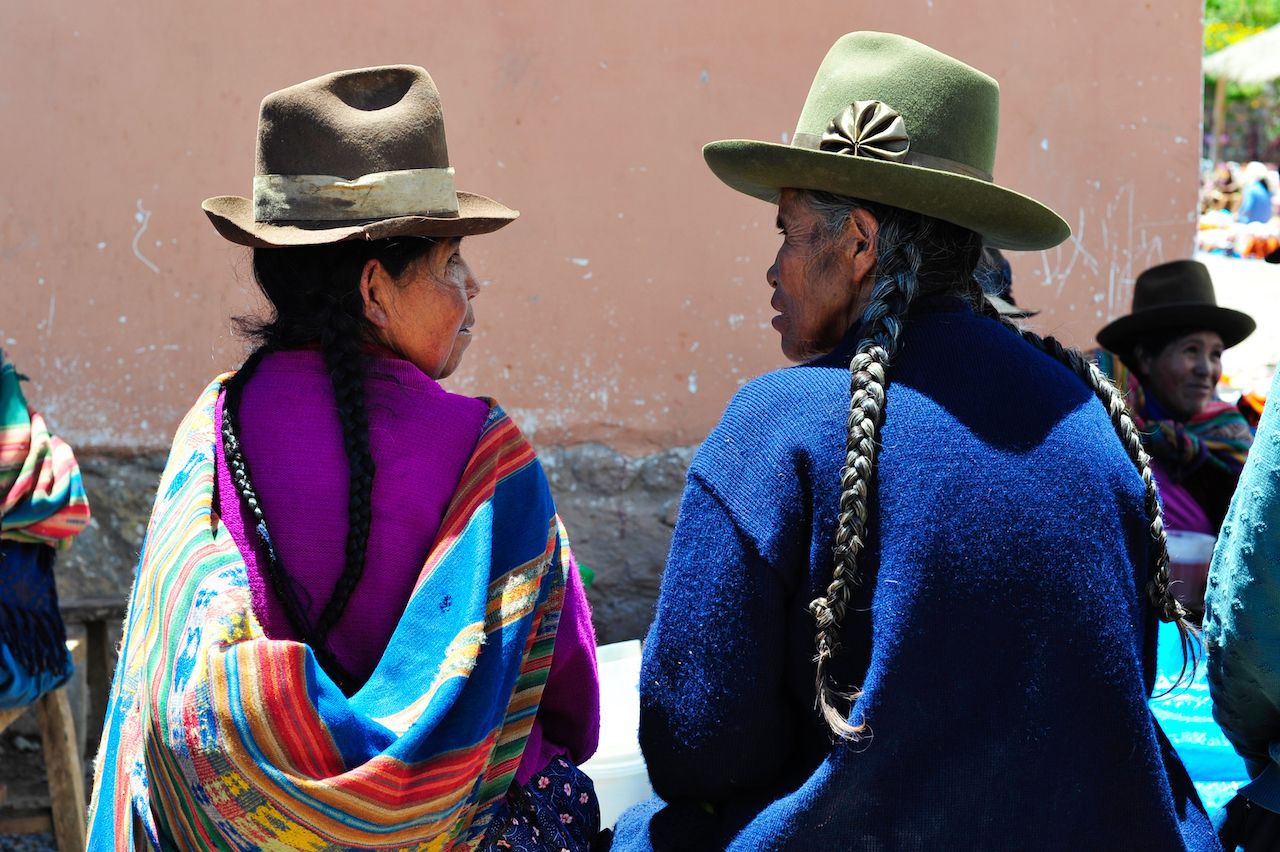
Photo: Cinematographer/Shutterstock
Some of the very earliest art from around the world depicts adults and children with plaited hair — both on their heads and their beards. Ornate braids could denote wealth because they take so long to create, and there might be flowers or jewels woven in. Simple braids could symbolize a person’s working status, as the braid helps keep the hair out of their face while they labor.
Among indigenous North American tribes, a three-strand braid is a symbol of strength or Oneness of Thought. Among some rural Hindu women, a braid is a sign of virginity. During China’s Manchu Dynasty, rice farmers wore braids, and they fought to keep them after Manchu was overthrown. Black women’s braids are integral to their culture; any style that weaves tresses together is symbolic of the strength of their roots and contemporary community. During the slave trade, traffickers would shave slaves’ heads to strip them of their identity and humanity; during slavery, the braids even mapped routes to freedom.
7. Hair as ceremonial headpieces

Photo: Peter Adams Photography L/Shutterstock
Hats are ubiquitous through time and around the world. Head out on a chapeau quest and you’ll find folks donning everything from day-to-day headgear to the most fabulous of ceremonial wonders, some of which incorporate hair directly into the design. For example, on special occasions, Miao women of southern China take a tall, wide-horned headpiece and wrap their long, braided hair around it in intricate patterns. Often they use linen and other fibers, as well. Sometimes they incorporate their ancestors’ hair in the pattern in order to honor their memory.
Occasionally these rather gigantic headpieces are ornately crafted of silver and serve as a bride’s dowry. The head-turning tradition is estimated to be at least 2,000 years old. During the annual summer Shaman Festival in the villages of Rebkong, Tibet, girls wear large coral beads in their hair to honor the Mountain Gods and request good health and a bountiful harvest.
8. Long and dark lashes have been trendy since Ancient Egypt.

Photo: Goncharov_Artem/Shutterstock
Darkening eyelashes is part style, part practical. In ancient Egypt, men and women darkened their lashes to protect their peepers from the glaring sun. It wasn’t until 1917 that Maybelline started marketing mascara, in cake form, in the United States. There have been some truly odd recommendations about how to lengthen lashes. In the late 1800s, the running wisdom was to cut off the ends and/or use a mixture of pomade and walnut oil. The first known extensions were also the most painful: An 1882 report out of Paris shows ladies sewing head hair onto their eyelids. Today, lash bars and studios are all the rage. There, you can get eyelash extensions applied using mink, silk, or synthetic hairs, and they’re stuck on one by one with adhesives, rather than sewn.
9. Eyebrow threading started millennia ago.
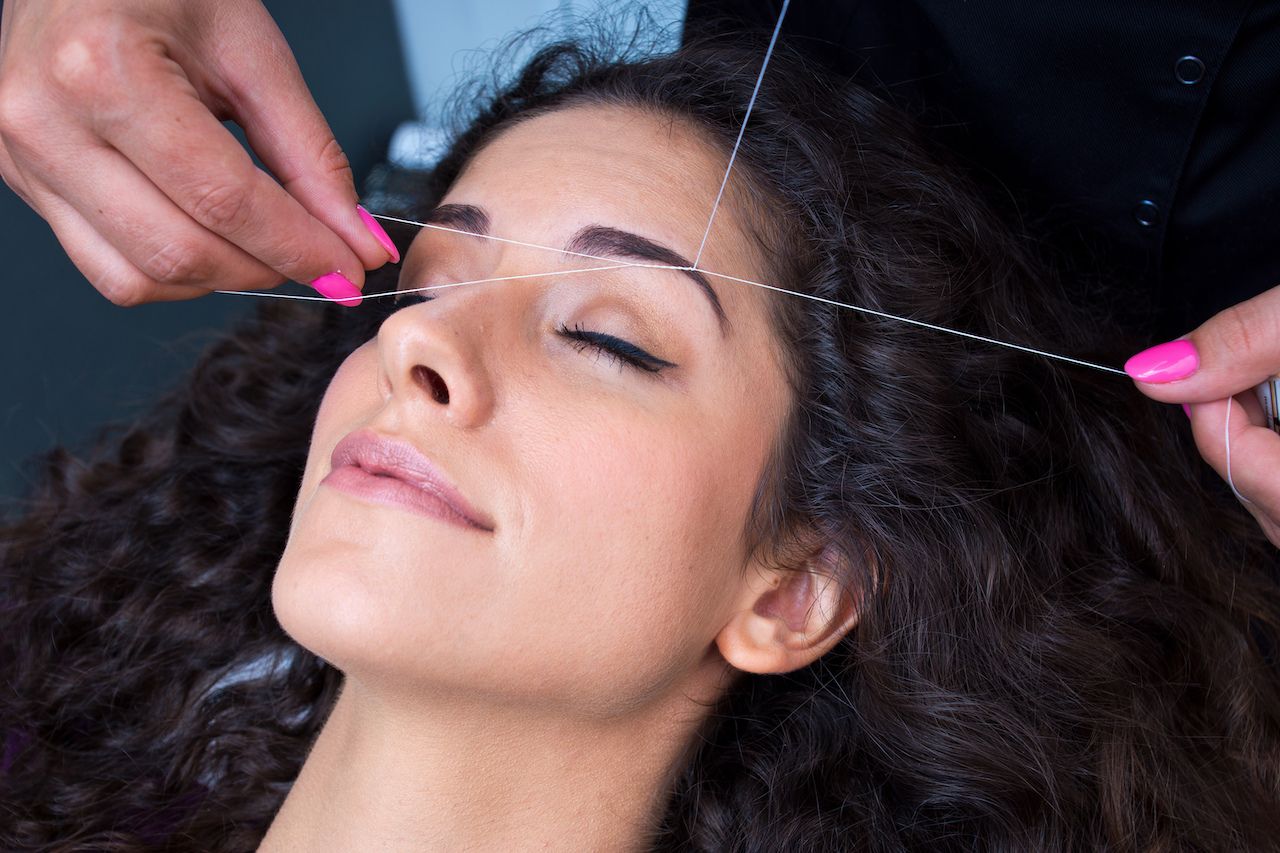
Photo: dean bertoncelj/Shutterstock
We’re not sure exactly when threading started, but we know that at least 5,000 years ago, Persians in what is now Iran developed the fine art of twisting a cotton loop of thread to remove each chin, cheek, sideburn, or, most commonly, eyebrow hair at its root. Threading artists use each hand, and sometimes their mouth, to meticulously manipulate the string loop to finesse hairs from their follicles. (The part that is in the threader’s mouth never touches the recipient’s skin.)
Called khite in Arabic, threading was such an important aspect of culture that a girl’s first procedure was part of her initiation into adulthood. The delicate technique quickly spread to India, Pakistan, Saudi Arabia, and China, only gaining popularity in big cities in the US in the early 2000s. It can hurt, but talented threaders shape the brows with laser-like precision, and the process doesn’t irritate the skin like plucking and waxing can. Sometimes, the old ways are the best.